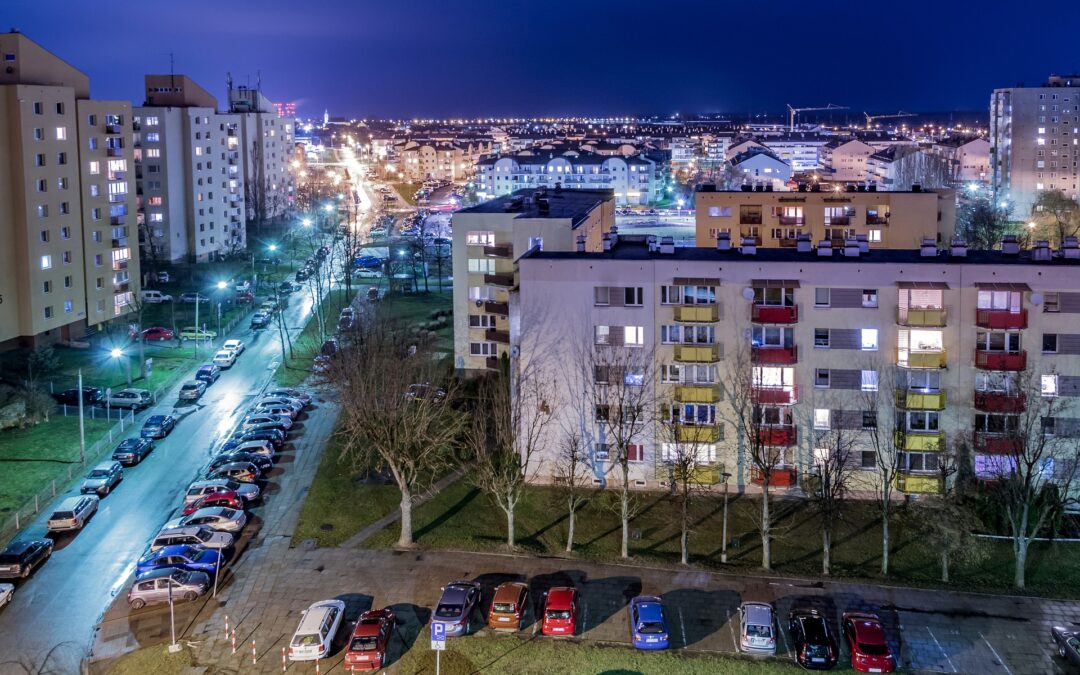The “spatial chaos” caused by poor planning in Poland results in annual waste of 84.3 billion zloty (€18.6 billion) due to inefficiencies in land use and transport networks, as well as excessively dispersed housing, according to the Polish Economic Institute (PIE), a think tank.
The largest cost, of 31.5 billion zloty, is related to inefficient and congested transport routes, calculated through the costs and time of commuting.
The report finds that another 20.5 billion zloty per year is lost on the construction and maintenance of infrastructure – including roads, water systems and sewage networks – linking “excessively dispersed housing”. This also includes redundant systems which are still maintained.
“Highly dispersed development is the main reason for the high maintenance costs of technical and social infrastructure,” says the report. “This dispersion means that the expenses related to the functioning of the infrastructure are higher than they could be in the case of a more compact location of buildings.”
“Scattered development increases our transport needs,” adds its author, Paula Kukołowicz, a PIE analyst. She notes that 45% of inhabitants of suburban areas say that their place of residence is poorly connected, compared to 14% in large cities.
Aż 84,3 mld zł wynoszą całkowite roczne koszty chaosu przestrzennego w Polsce. W przeliczeniu na każdego zameldowanego mieszkańca to 2200 zł. Gdyby ograniczyć zjawisko chaosu przestrzennego, gminy zaoszczędziłyby rocznie co najmniej 5,8 mld zł.
Więcej: https://t.co/eHlXQXBuU9 pic.twitter.com/hyb8eTRzgt
— Polski Instytut Ekonomiczny (@PIE_NET_PL) January 19, 2022
Another 12.6 billion zloty comes from environmental costs. One reason for this is “faulty” laws allowing people to build in locations with high risks of natural disasters, say the authors. According to a 2008 study, 20.8% of the country’s population was living in flood-risk areas.
Finally, the report allocates 10.9 billion zloty to lower taxes and legal fees linked to disputes resulting from real estate regulations, as well as 8.8 billion zloty to inefficient agriculture due to farmland being broken up by residential projects.
“These costs are borne by residents, businesses and the state, including local governments,” says Przemysław Śleszyński from the Institute of Geography and Spatial Organisation of the Polish Academy of Sciences (PAN), who is quoted in the report.
The institute calculates that the total cost amounts to around 2,200 zloty (€490) per person each year. But it says that savings could quickly be made by local authorities introducing better planning: for example, at least 5.8 billion zloty could be saved as a result of optimising transport, water and sewage networks.
Paying for these amenities will become a “growing challenge” especially for communes experiencing depopulation. The “chaos” largely results from the natural process of people spontaneously changing their place of residence, followed by infrastructure, such as local shops.
However, a further cause is the lack of centralised spatial planning at a local level, with only 31% of Poland’s territory covered by communal plans. Finally, PIE cites an “oversupply” of land designated for housing, which it says is conducive to dispersed and low-density residential developments.
The authors of the report argue that these effects are “felt by the majority of Poles”, through longer journeys to work and schools, as well as lower satisfaction with the spatial accessibility of various places. The resulting greater use of cars, in turn, contributes to street noise, poor air quality, congestion and a lack of parking spaces.
Main image credit: Arcaoin/Pixabay

Maria Wilczek is deputy editor of Notes from Poland. She is a regular writer for The Times, The Economist and Al Jazeera English, and has also featured in Foreign Policy, Politico Europe, The Spectator and Gazeta Wyborcza.




















